Trumpeter Swans During Winter At La Salle Park

When Bob and I visited La Salle Park in Burlington last winter, we had quite a significantly different experience from the last time we found ourselves there in April 2013. A good number of Trumpeter Swans (Cygnus buccinator) were present just offshore from the snow-covered beach, but rather than dallying in the warm waters of Hamilton Harbour, they were trying to keep warm on the icy surface of the frozen bay.
Some people might call us intrepid birdwatchers for tramping about the less-than-ideal Lake Ontario shore on such a bitterly cold day. Strong winds gusting to 65 kph swept out of the west making already cold temperatures feel like -23 Celsius. As I stood onshore observing the flock of Trumpeter Swans that winter there, the gale-force winds clobbered me and threatened to topple me over. I was constantly shifting my feet to regain my balance.
Although a large group of swans was congregated in a sheltered corner of the bay, a few solitary birds were strewn out at the edge of the ice where it lay next to the open water of Hamilton Harbour proper. With the conditions being so harsh, each swan would frequently stand up, walk a few feet, then settle itself into a sitting position once again. They looked like sentries keeping watch against intruders on the flock’s position.
When Bob and I first arrived at La Salle Park, we hurried to talk to other people returning to their cars on the off chance that they could point us in the direction of any rare birds seen there that morning. As luck has it, we were met by Kyna Intini, a young and experienced volunteer with the Ontario Trumpeter Swan Restoration Program.
As other volunteers showed up to assist Kyna, she explained that they had planned to band some of the Trumpeter Swans that afternoon, but because of the arctic conditions that prevailed, a large portion of the flock was assembled on the three small islands in the Harbour. Kyna made the decision not to disturb the swans given the situation.
It was interesting to learn from Kyna that she had just chatted with Harry Lumsden that morning. The 23rd annual Trumpeter Swan Society Conference is being held in Maryland the week of February 3-6, 2014, and Harry, amongst other experts and enthusiasts from around the world, would be gathering at this 5th International Swan Symposium to share knowledge about research, conservation, management and protection of Trumpeter Swans.
Mr. Lumsden is the retired Ministry of Natural Resources biologist on the right side of this picture who, in 1982, initiated the restoration program for Trumpeter Swans in Ontario. These magnificent birds had been hunted to virtual extinction in Ontario and most of North America by the end of the 1800s. When Harry became involved, only a few small swan populations were found to have survived, so he organized a captive breeding program in conjunction with banding each swan.
Bob and I walked along the trail leading east from the marina parking lot in order to get a glimpse of the islands where the bulk of the Trumpeter Swans were roosting.
A continuous influx of Trumpeter Swans was making its way from the three man-made islands to the primary flock nestled together near the beach. It was impossible to miss their approach because each couple of airborne swans was very vocal, announcing their arrival with boisterous honking.
Although the islands are fairly close to shore, and the ice appeared to be very solid, Bob and I did not dare venture out from the safety of solid ground. It seemed odd to us that the Swans would assemble on such exposed mounds of rock where they would be continually buffeted by the ceaseless frosty winds.
That is when we recognized that the swans were using the small islets for a windbreak. A dozen or so were resting on the ice next to a patch of open water on the lee side of the most distant island. A Merganser Duck sharing the narrow channel gave one of the Swans some attitude.
From there on the shore of Burlington Bay, we watched as rifts of snow scudded across the glare ice and rose in steep eddies before dissipating on the air currents. The winds were fierce but with the late afternoon sunshine casting long shadows over the shiny surface, it made for a pretty picture.
La Salle Park is located in Hamilton Harbour within sight of the Burlington Skyway Bridge. One of the things that makes this location a prime wintering ground for Trumpeter Swans is the fact that the harbour remains unfrozen throughout the winter. Trumpeter Swans are such large birds, the largest swan in the world, the largest waterfowl in North America, that they require long stretches of open water in order to take off and land. Also, the open shallow water of the bay allows the swans to feed on natural vegetation from Lake Ontario even though their diet is amply supplemented with daily deliveries of grain.
About 200 Trumpeter Swans winter near La Salle Park each year, arriving in November and departing throughout February until the end of March. Trumpeter Swans do not winter exclusively in Hamilton Harbour, however.
Some other locations along the Lake Ontario shoreline where the swans can be found are Bluffer’s Park, Frenchman’s Bay and Whitby Harbour.
Just a few days earlier, Bob and I saw a trio of Trumpeter Swans at Bluffer’s Park,
and we duly recorded their numbered wing tags. One of the swans did not have any tags on its wings.
As you can see in this photo, some Trumpeter Swans have wing tags and some do not. That is why there is an ongoing banding program underway. A swan that shows up at a wintering ground without any leg band or wing tag indicates that the swan is from the wild. Once that swan is sexed and banded, it will be released to carry on as usual.
If you see a Trumpeter Swan with a yellow tag, please report it to: Ontario Trumpeter Swan Restoration by email at: trumpeterswan@live.com. The bright yellow numbered wing tags only appear on Trumpeter Swans from Ontario. Dedicated volunteers tag between 4 and 7 swans a day when they are on their winter feeding grounds, but it is a year-round operation.
Hamilton Harbour and La Salle Park are home to the largest wintering migrating flock of Trumpeter Swans in Ontario. Most Trumpeter Swans living in Ontario will have been tagged right there at La Salle Park. Having said that, however, Kyna did tell me that she and other volunteers would be tagging Trumpeter Swans on Lake Couchiching the following day. That is up near Washago in the Orillia area.
Bob and I were quite entertained that frigid afternoon. Each time some swans prepared to make a landing, they were literally bouyed on the air by the biting westerlies that showed no sign of stopping.
Despite their weight, they seemed to float in midair.
But more than once, when touchdown was achieved, we saw the Swans skidding and sliding on the glare ice before coming to a complete standstill. One poor little cygnet took a nasty tumble but came up unscathed from its unpracticed landing technique.
As I observed one cygnet that had just repositioned itself on the ice, I had to wonder if it was feeling the cold as I was. The bitter winds were beginning to penetrate my several layers of clothing after being on site for about an hour or so. I watched as the cygnet carefully lifted one webbed foot…
tenderly edged it up the side of its body…
and tucked it snugly into the downy feathers beneath its wing. It is hard to imagine that the Swans could be warm and comfortable their on top of a foot of ice and where fully exposed to the elements. They certainly seemed nonplussed when their delicate feathers rippled in the wind.
Trumpeter Swans are quite capable of enduring the harsh environments where they live due in large part to the dense layer of down that insulates their bodies. It can be up to 2 inches thick and makes the birds almost impervious to the cold.
Now, if only I could bear up under the sub-zero temperatures so well, but really, neither I nor Bob can complain. We relished the challenge of being out on such a bone-chilling, blustery day. Only our fingers tended to get a bit frosty because of our use of the cameras.
I would not have missed the outing for anything. It was a nonstop show of elegant flight,
graceful prowess,
and territorial displays of dominance. We had no idea if we were looking at pens or cobs, females or males, but it made no difference to our adoring eyes. It was just nice to see such a thriving population of Trumpeter Swans, a testament to the successful work of the Ontario Trumpeter Swan Restoration program and its team of cooperators and volunteers. They deserve a real pat on the back.
For more information on efforts to save Trumpeter Swans in Canada and across North America, please checkout the following websites:
Donate now to the Wye Marsh Wildlife Centre: Trumpeter Swan Reintroduction Program
The Trumpeter Swan Society – Ontario Working Group
The Trumpeter Swan Society (TTSS) is a non-profit organization dedicated to assuring the vitality and welfare of wild Trumpeter Swan populations.
Related:
Trumpeter Swans Sighted In The Spring At La Salle Park

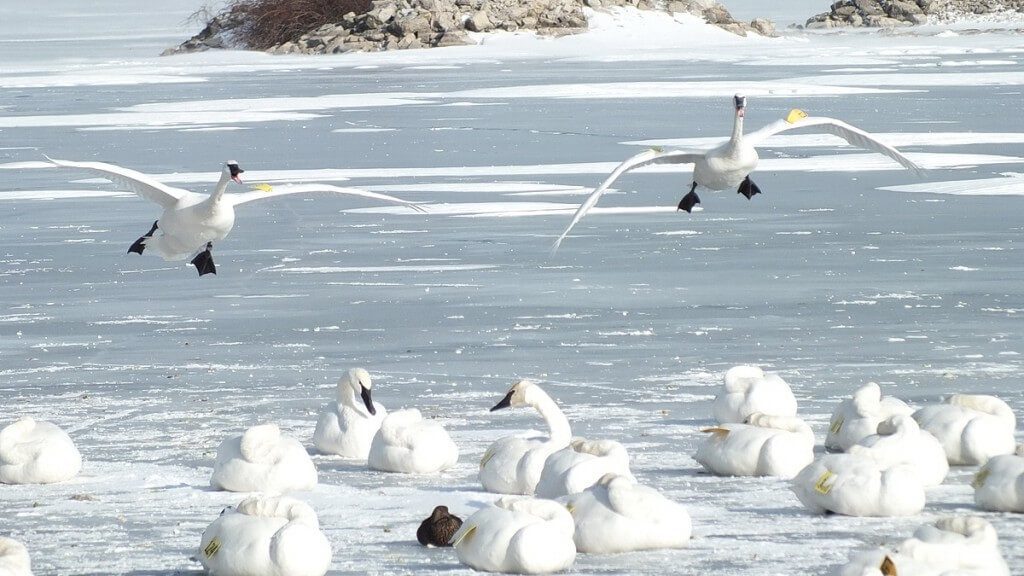


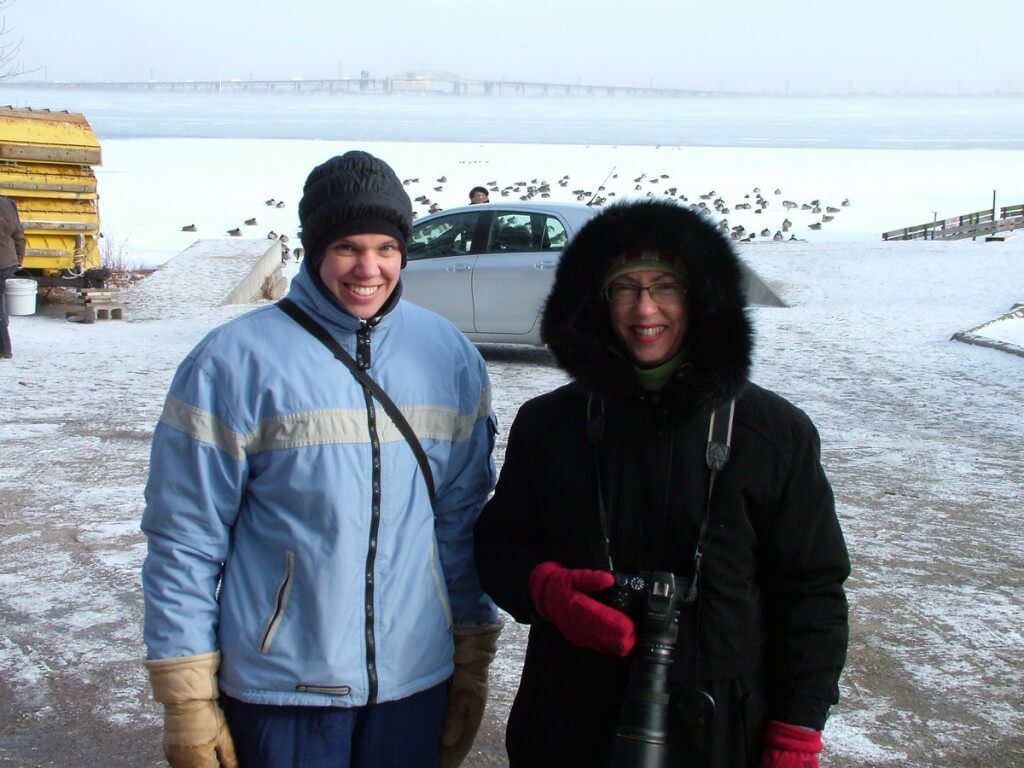





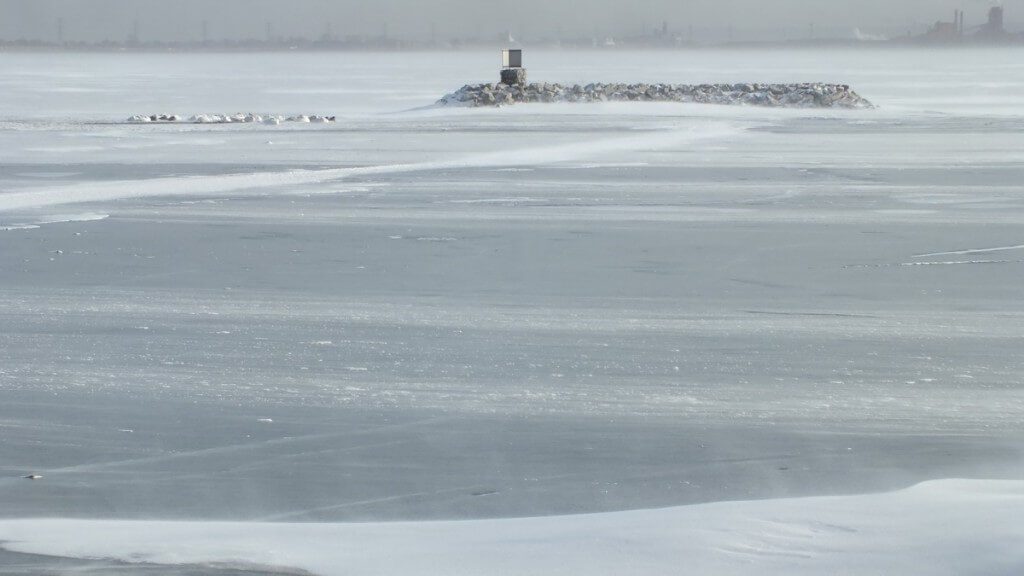
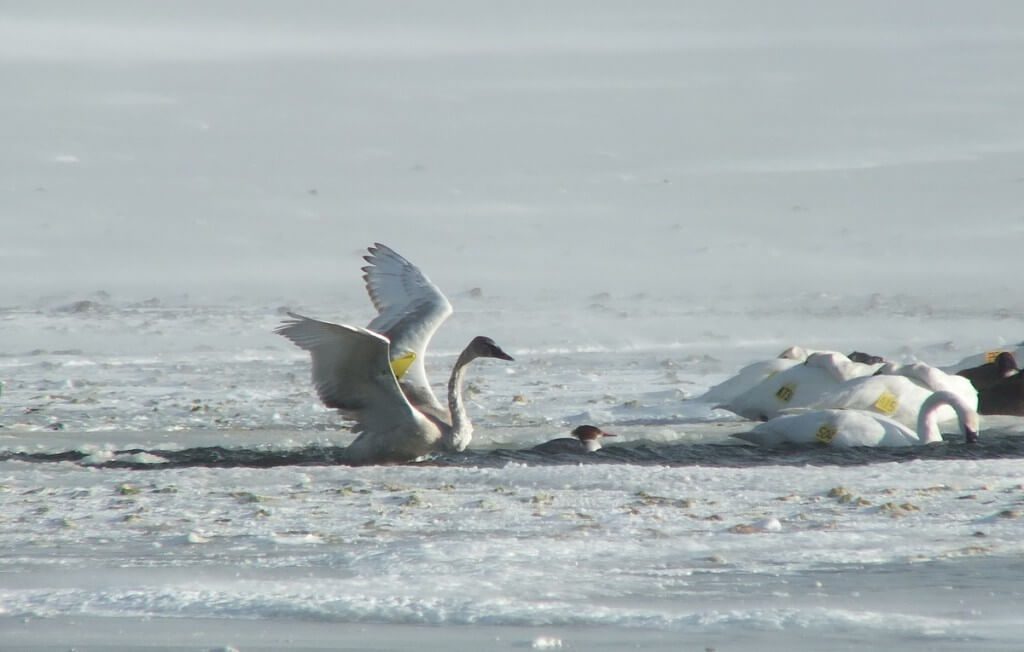

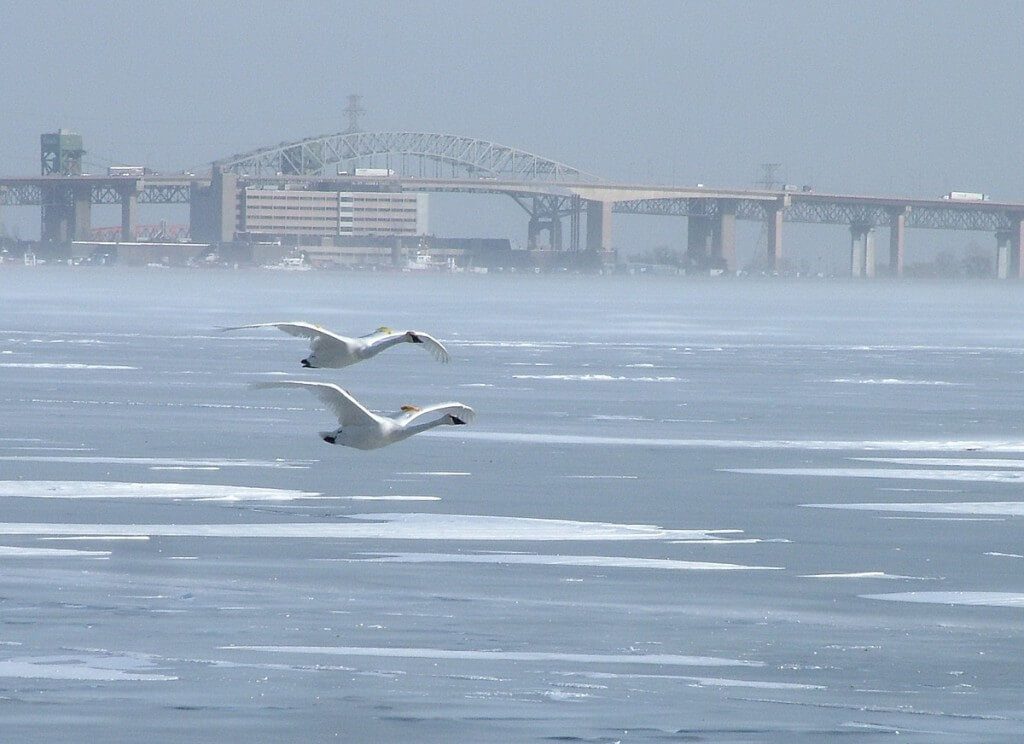





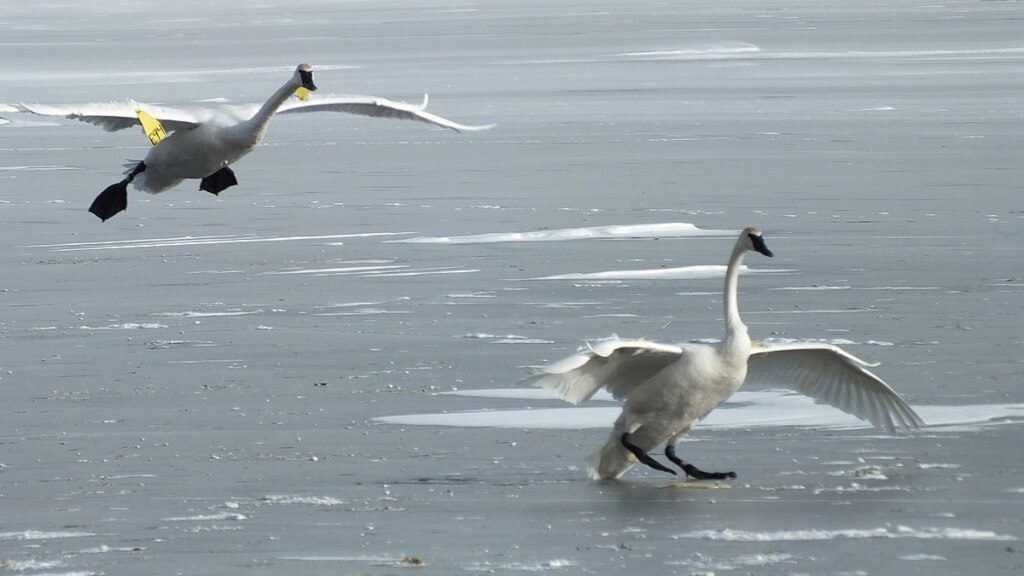
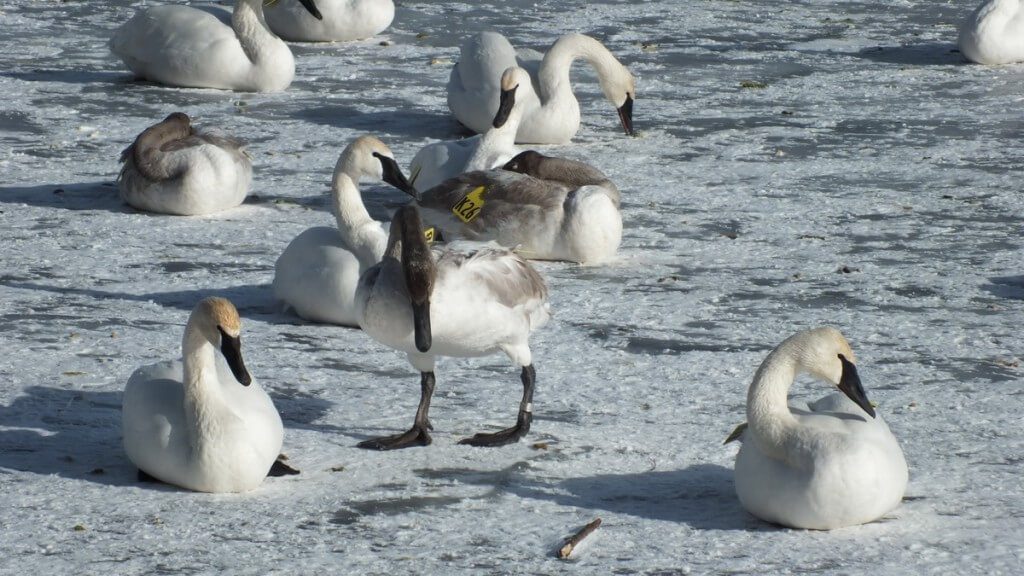
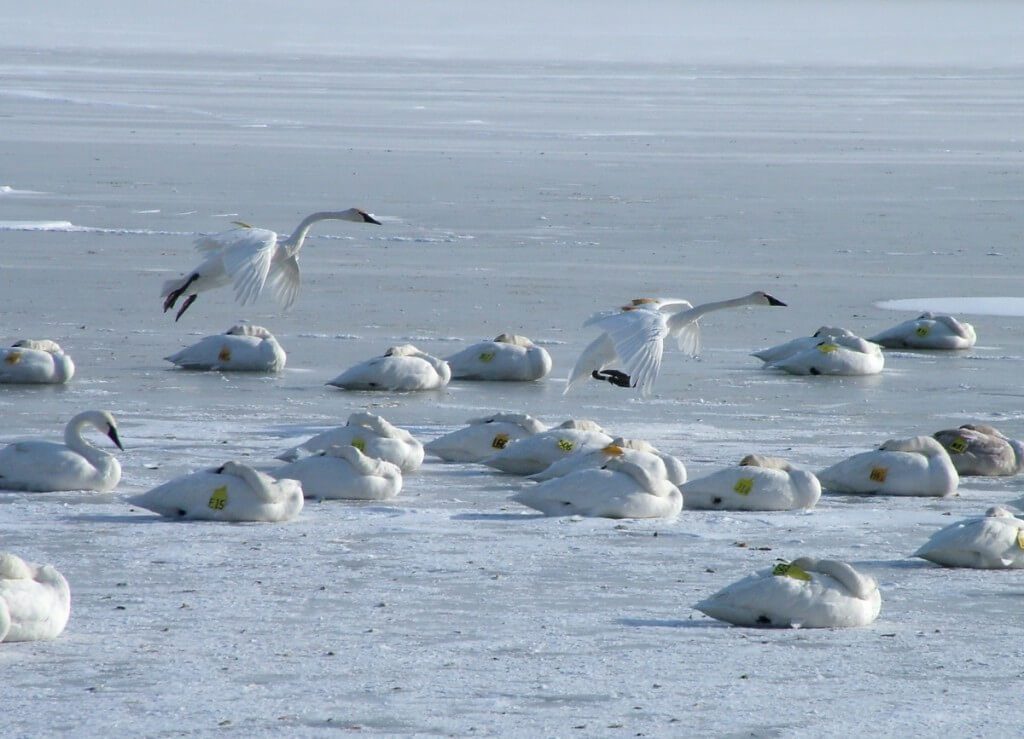


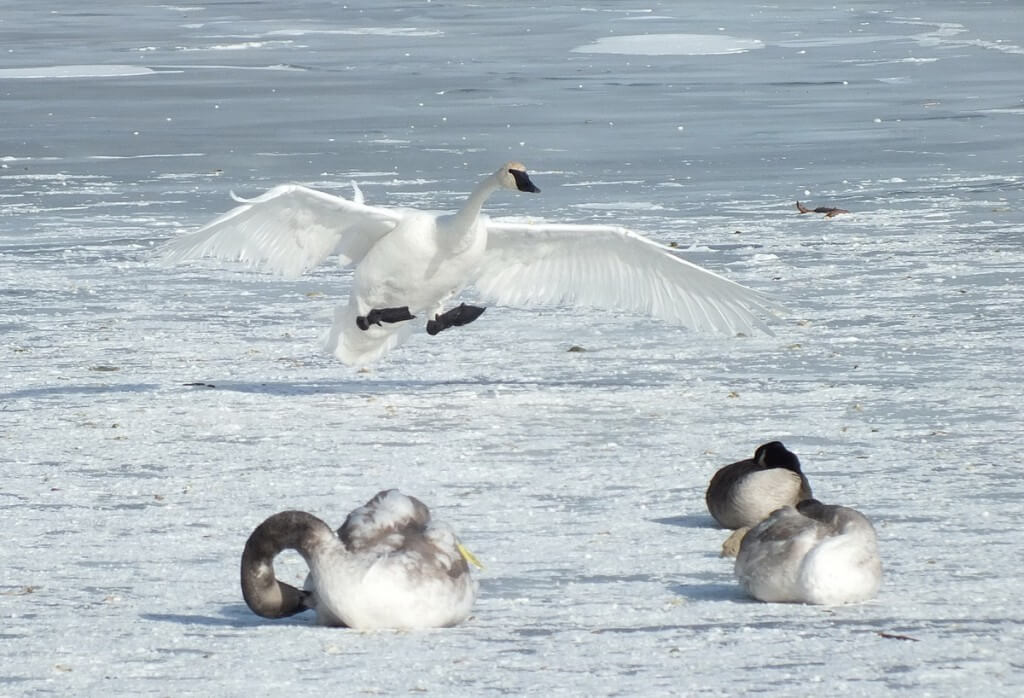
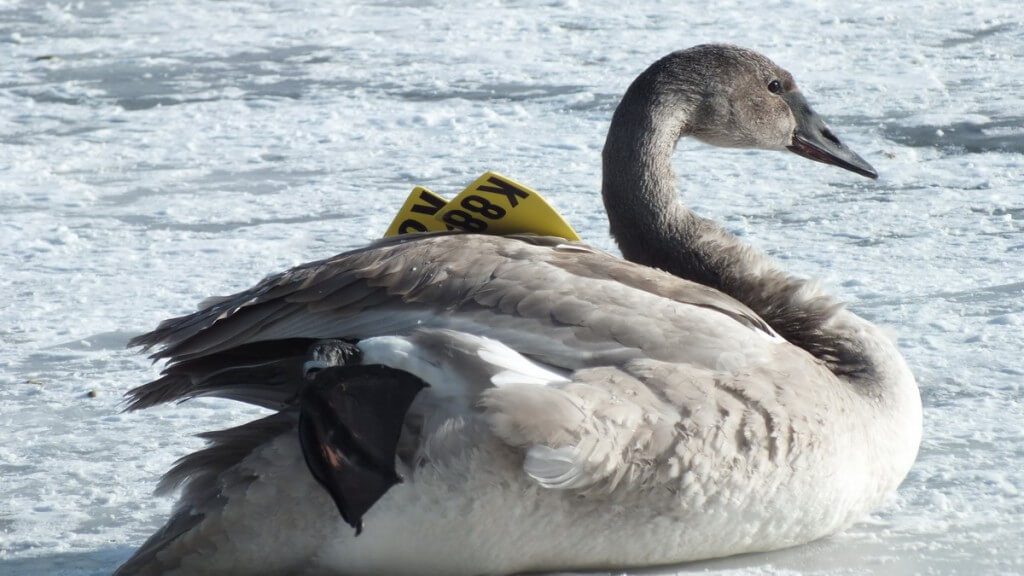
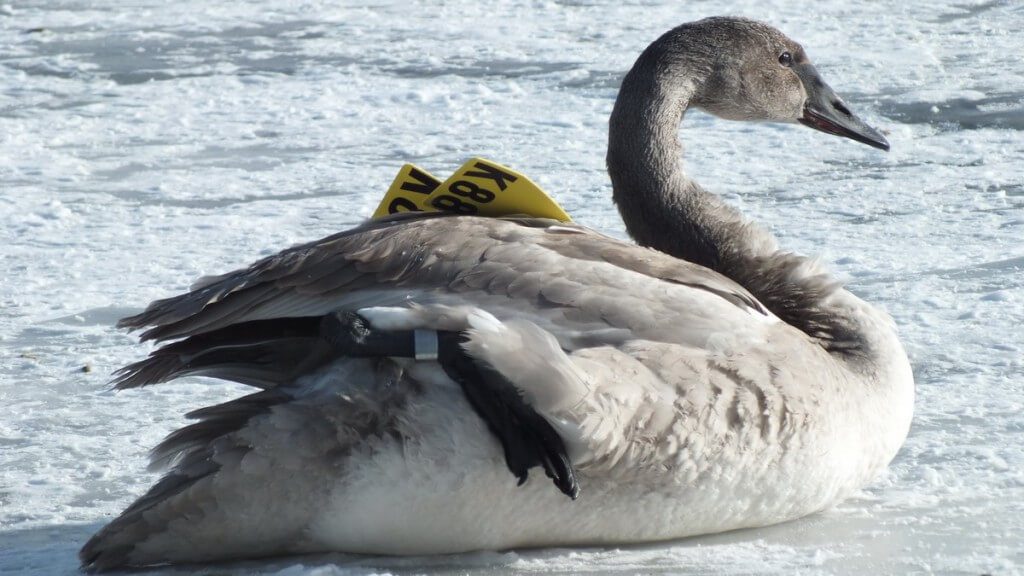
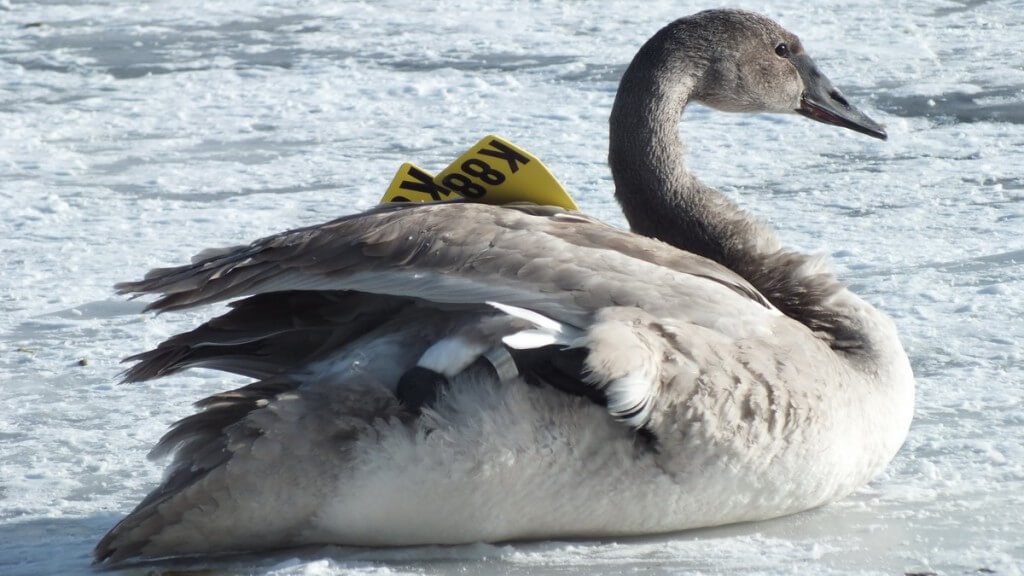





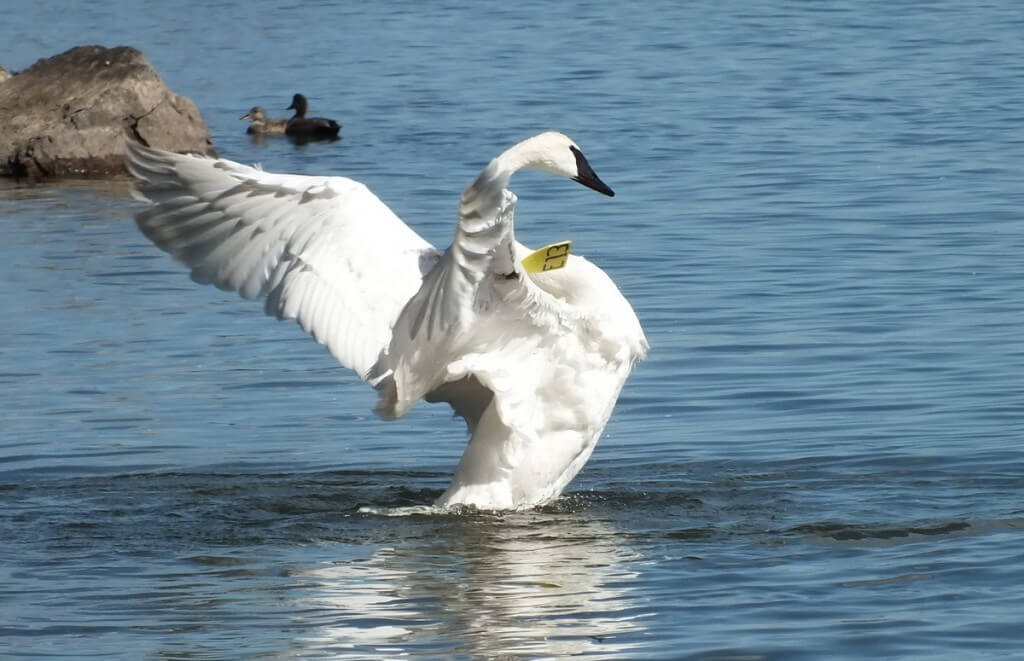
Love the blog/article, fantastic pictures. I saw this on the Trumpeter Swan Society Facebook page and reposted it on the Ontario Trumpeter Swan Facebook page. I’m glad Harry Lumsden saw this…it is always good to see others perspective of the ongoing restoration efforts. I live in Aurora and part of my job includes caring for swans. Again fantastic
thanks, Donna. It is good to spread the word about such wonderful efforts to assist and monitor the Trumpeter Swans. We appreciate you re-posting the story.
So Beautiful! I really enjoyed the video too!
Thanks for taking the time to comment on our story and video. It is hard not to be in awe of such elegant birds.
Congratulations on a first class commentary and wonderful photos. You’ve done a really fine job.
Harry Lumsden
Harry, coming from you, that is a real compliment. We do enjoy birdwatching immensely and only really became aware of the Restoration Program for Trumpeter Swans when my parents recently unearthed a certificate sent to them in 2003, the winter they spotted a Trumpeter Swan on Oxtongue Lake, up near Algonquin Provincial Park. They had been able to record the band number on the swan and duly reported it. The neat thing is that, on that Certificate of Appreciation, it is noted that you are the person who banded that swan in 2001. It was through the information on that certificate that we became aware of the ongoing efforts to tag swans and follow their movements and progress. We are very grateful to you for your efforts over the years.
Excellent photos and photo narrative of your day watching trumpeter swans. Keep up the great work and enjoyment.
Thanks, Ron. At different times that day, Bob and I just looked at one another and thought, “we must be nuts to be birdwatching in such an open and unprotected area on one of the coldest and windiest days of the winter”. But you know, if you go out there prepared for the worst, it is surprising what you can endure. It was well worth the effort.